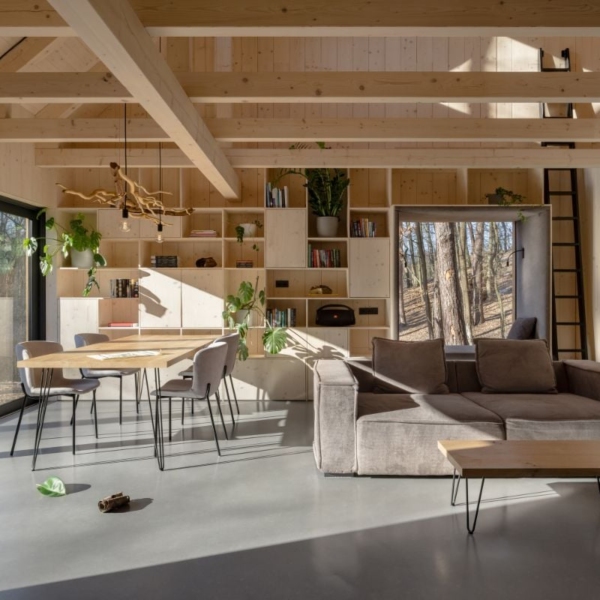Circles intuitively are a safe shape that encourages us to feel joyful, comfortable, and peaceful. Just by adding a few circles to your garden design, you can completely change the feeling of your garden. Here are a few ways to add a playful circle garden design to your space.
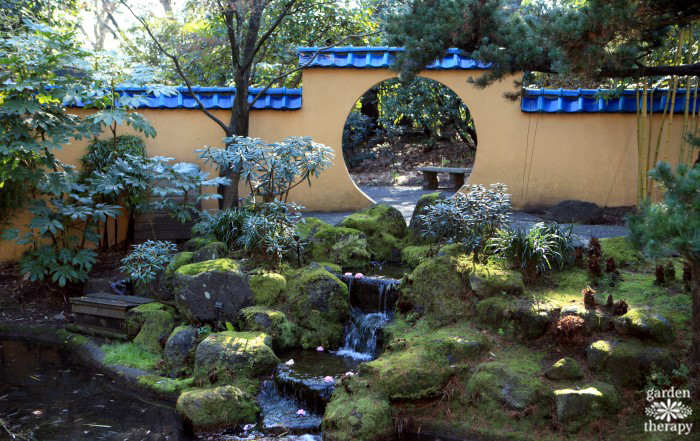
How is it that when designing a garden, we rely so steadily on squares and rectangles? Sure, they’re easy to organize and plant in, but they make your garden so boxy.
Circles, on the other hand, encourage positive energy. They can turn a plain backyard into a meditative, safe space.
Shapes hold a lot of power over the type of energy our garden emits and how our gardens make us feel. So today, I want to encourage you to add circles to your garden, from playful alliums to the garden beds themselves. And I’m going to tell you exactly why!
This post will cover…
The Shape of Joy
I was recently reading the book Joyful by Ingrid Fetell Lee. It’s a fascinating book all about how the everyday spaces and objects we interact with can impact our mood.
What really resonated with me was when she described circles as the shape of play, citing things like balls, balloons, kiddie pools, hula hoops, and Ferris wheels. Toymakers will go out of their way to make rounded edges and shapes.
But why are we so attracted to these circular shapes? Psychologically, we’re attracted to circles because they feel safe, comfortable, and approachable. Sharp objects have the opposite effect, giving us a sense of danger. Just think of spears, knives, and sharp teeth. Bleh!
Surrounding ourselves with circles can subconsciously encourage playfulness and, therefore, joy. Likewise, objects with sharp corners and shapes will inhibit this playfulness. Even if it’s not directly in your line of sight, these objects can have a lasting effect.
Circles in Feng Shui
It is no surprise that Feng Shui also discourages using sharp corners, believing that it decreases flow. Meanwhile, round shapes are considered the most auspicious in Feng Shui.
Feng Shui believes that the circle is associated with heavenly energy. In ancient times, many believed heaven was a sphere above us, with the circle representing unity and perfection. A circle is infinite, with no end in sight.
Using circles can help to control the consumption of energy and prevent oppression in the home.

My Circle Garden Design
In my first house, I had a circle garden design in the front yard. It drew people into the garden, and they would often stay in there. From neighbours to strangers just walking by, looking out my window and seeing someone in my garden was always a surprise.
Now I see that circles are magnetic, and people gravitate toward them. And since I had a bench, they would stop and sit for a moment, enjoying my garden’s serenity.
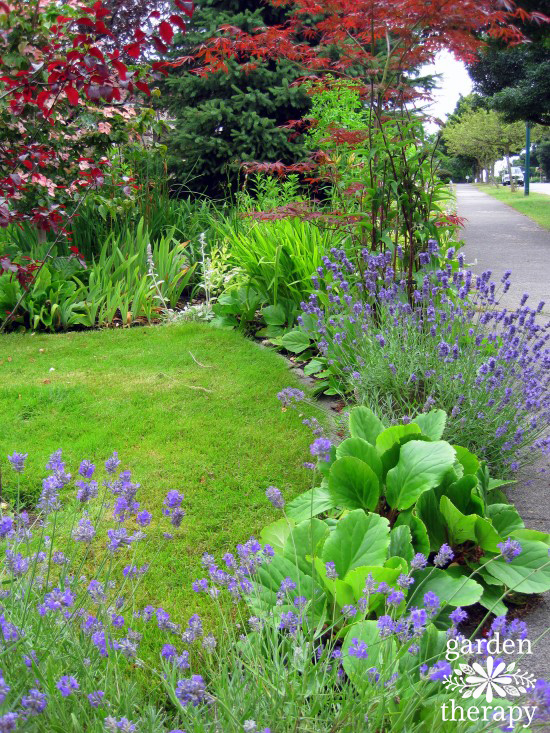
A Regenerative Garden is a Circle
When writing my book, The Regenerative Garden, I also thought a lot about circles. Throughout the six chapters, soil, water, plants, climate, ethics, and community, I represented them as a circle.
All of these core elements of regenerative gardening are interconnected; there is no beginning or end. They all need each other to complete the circle.
It also represents mother earth and how these elements make up a larger ecosystem. Leaves will fall, decomposing and feeding young plants, where the sun and water make them strong, until they get so big that they eventually lose their leaves and start the cycle again.
With or without us, the garden will naturally cycle. A regenerative garden is circular!

How to Create a Circular Garden Design
Looking for ways to add circles to your garden? These circle garden ideas will allow you to add the fun shape to your garden, subconsciously fostering good energy and positivity.
Circular Flowers
My last house had a late-blooming cherry blossom with big double flowers that were dense and tight. The tree looked like it was covered in a bunch of pom poms. Despite there being other trees nearby, the cherry blossoms drew you in.
Many circular flowers have this effect. My personal favourite, as well as kiddos, are allium flowers. They look like big globes just waiting to be booped.
Wreaths
I’ve made many wreaths over the years, one for every season. From lavender wreaths in the spring to living succulent wreaths, you can really get creative with how you decorate a wreath. It doesn’t have to be just for the holidays!
Even a simple grapevine wreath hanging in the garden works as simple, yet beautiful garden art.
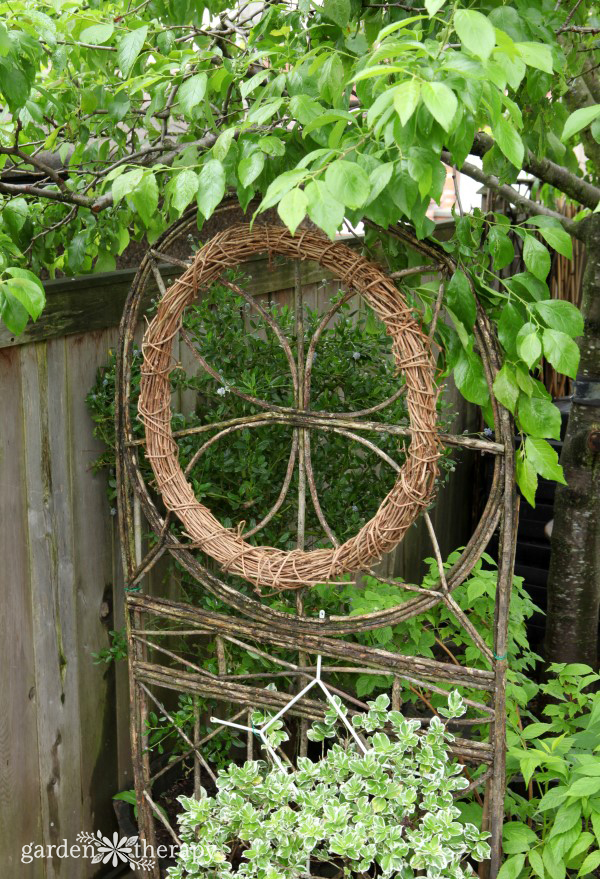
Archways
The second you add any archway to a garden, people will feel inclined to walk underneath it. It feels like you’re entering a safe space where you know you will feel peace and serenity in a garden sanctuary.
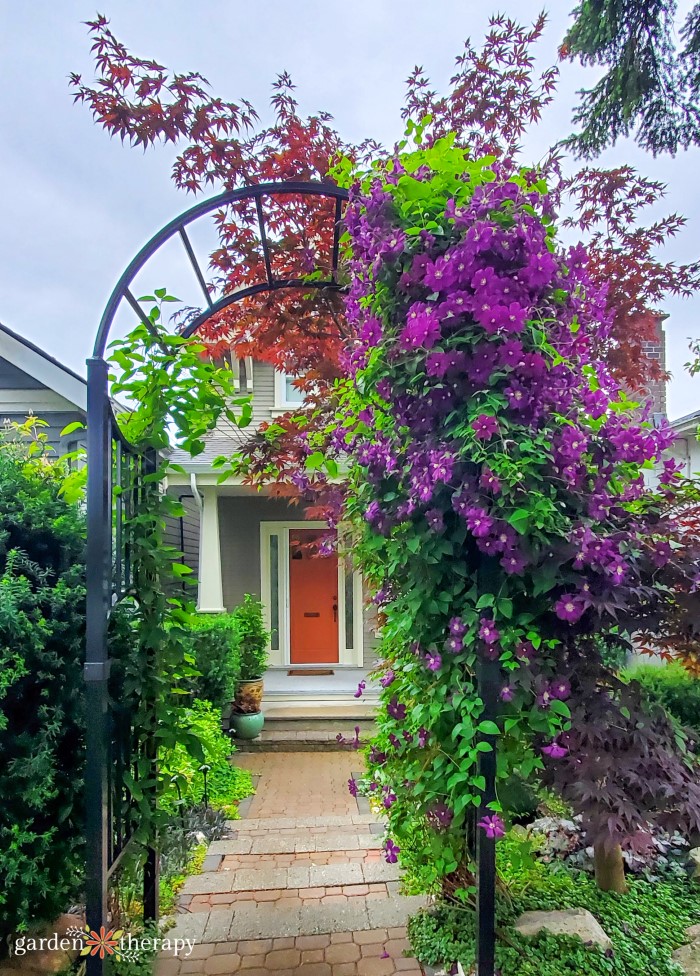
Ponds
When creating projects for The Regenerative Garden, I made myself a wildlife pond. This was a spot in the garden full of aquatic plants that also offered a safe haven for wildlife to come and have a drink.
Adding a circular pond to your garden can also create a peaceful ambience. You can create aeration with a pump to give you a water feature with the sound of flowing water.
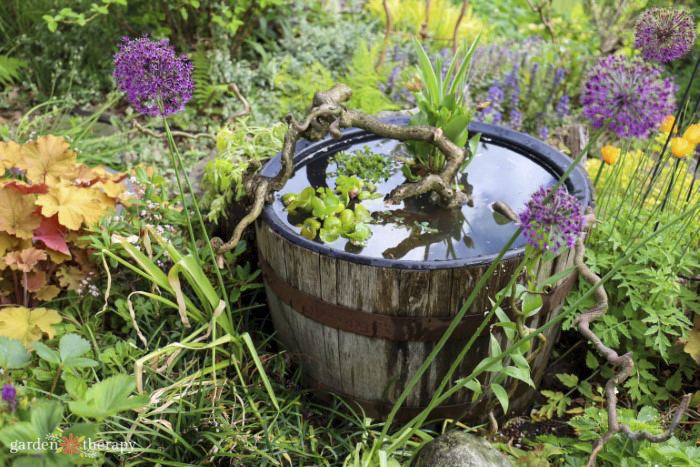
Plant Pots
Avoid any square-shaped pots and go for the naturally circular pots. The rounder, the better! You can implement this with the container plants you place on your deck or patio or even inside with all your houseplants.
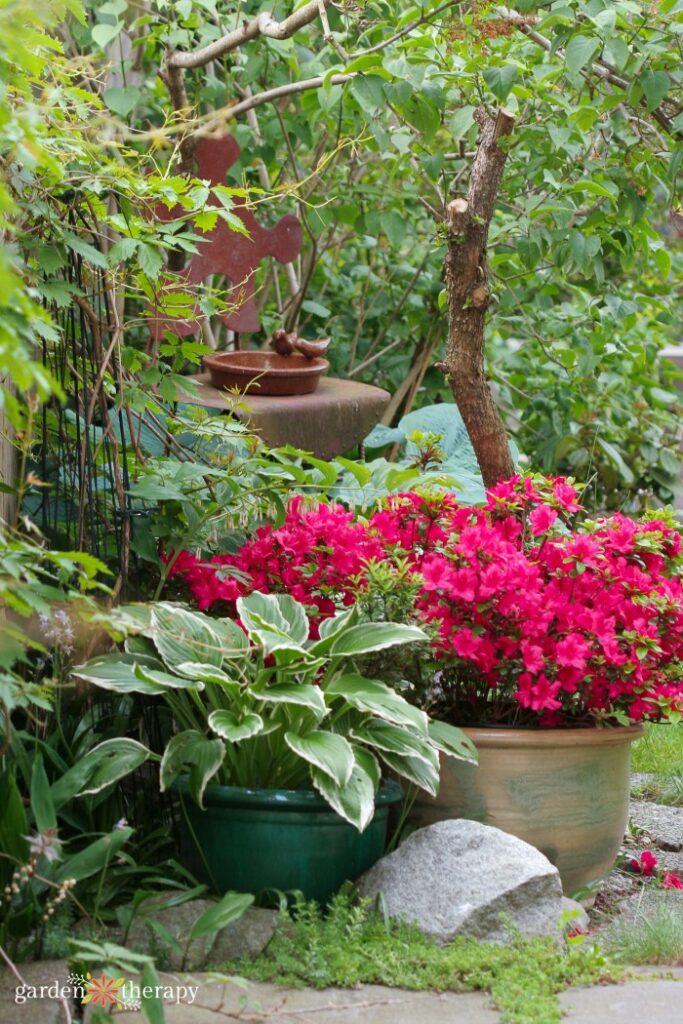
Bird Baths
Bird feeders are a helpful and decorative way to add a circle to your garden. And when a bird stops to have a drink and splash around in your fountain, well, it will feel even more magical.
I personally have a bee bath, which is pretty well the same thing but on a smaller scale. I also pop in rounded river stones to give the bees a safe place to perch without fear of drowning.
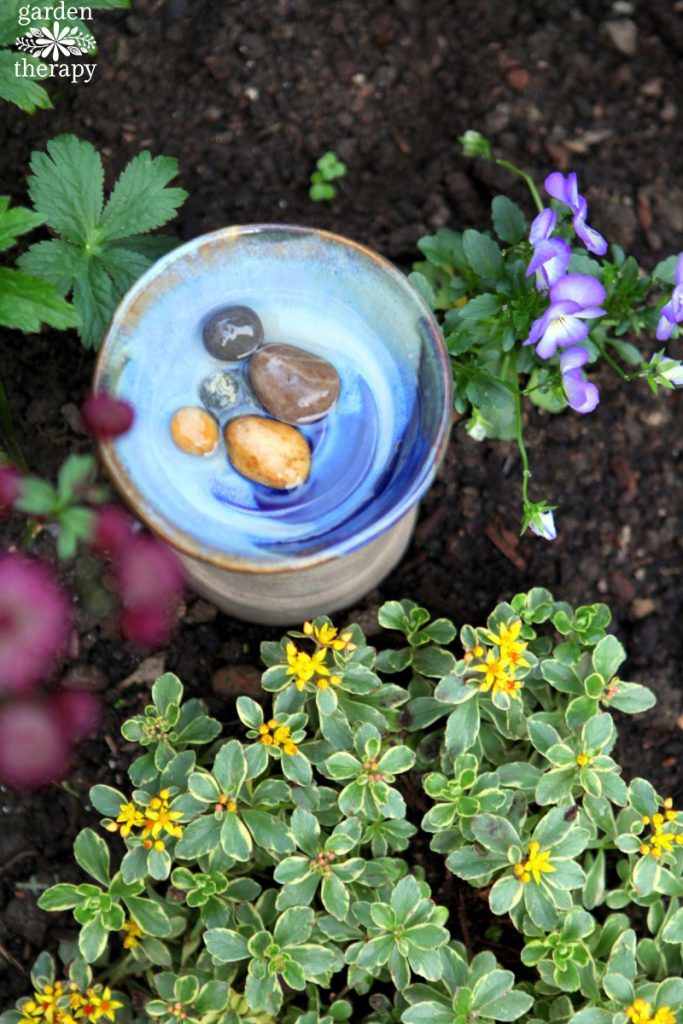
Moon Gates
Moon gates are about as whimsical looking as they sound. A rising trend in gardening, these “gates” give you a circular perspective into another part of the garden without a door. Peering through makes it feel like you’re being transported to another world.
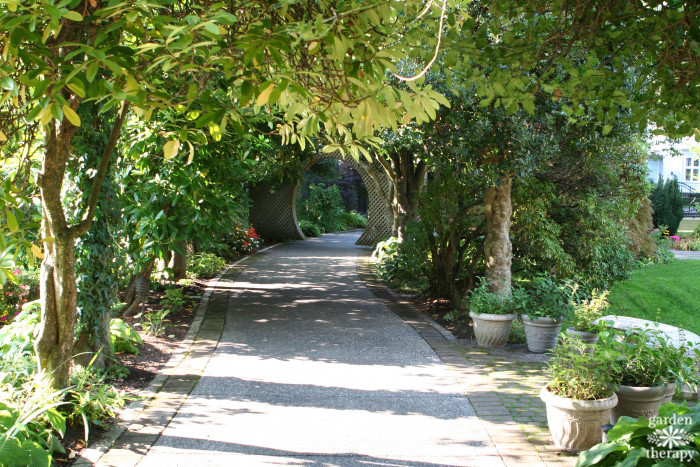
Tunnels
Like moon gates, you can also implement tunnels in your garden. These are made by encouraging vining plants and shaping shrubs to create a circular shape. They’re very common in botanical gardens and offer another magical touch to the design.
Keyhole Beds
A keyhole bed is a brilliant design that maximizes garden space and minimizes the number of pathways needed to access that space. You can walk into the keyhole and tend to the plants arranged 300 degrees around you.
African keyhole beds are raised round beds with a path that leads to a center composting bin. A keyhole design doesn’t have to be a specific shape to maintain its function, but a circle design is the most inviting.

Mandalas
Mandala translates to “circle” in Sanskrit. It’s all about creating a pattern inside a circle around a unified center. It’s a powerful symbol in Eastern religions and is often used to aid with meditation. Labyrinths and medicine wheels express a similar feeling and usage and are easy (but powerful) to implement in the garden.
Mirrors
Have you ever thought of hanging a mirror outside? Mirrors can be beautiful garden art when hung up on a fence, even giving the illusion of a bigger space and more plants than there really are.
Just remember that mirrors reflect the sun, so be careful where you hang them and direct the light from the reflection. They work best with plants growing around them to help diffuse the direct light.
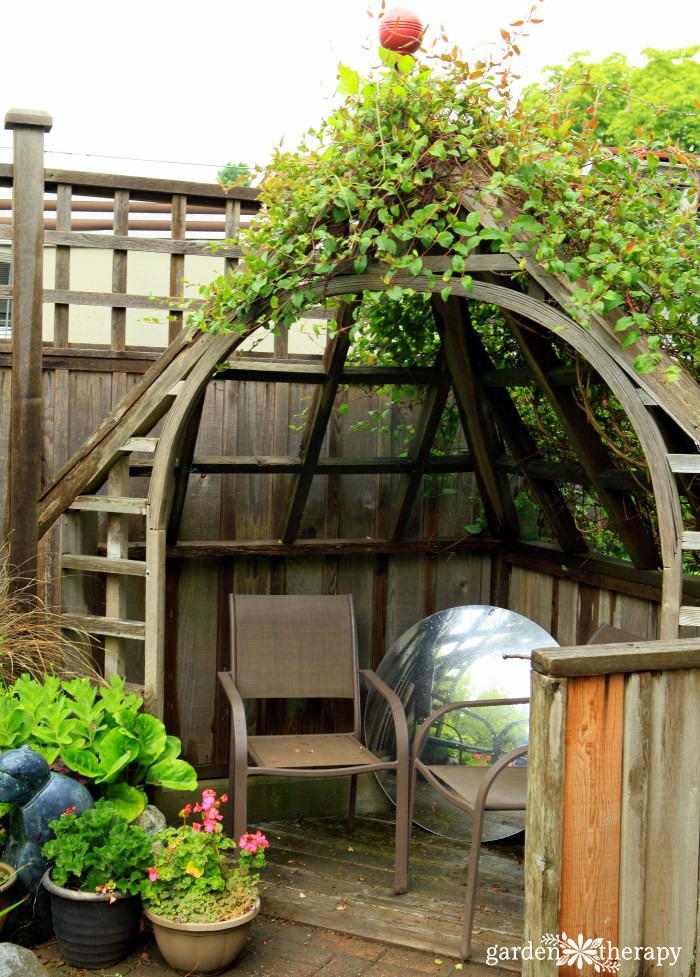
Fences
While you can add circles to fences like mirrors and wreaths, you can also try to use rounded, softer fence posts. This will make your garden look less guarded and more inviting while still protecting your privacy.
I also love seeing people get creative with fences, adding things like marbles shining in the fence or rounded portholes for their dogs to peek out and watch people passing by.
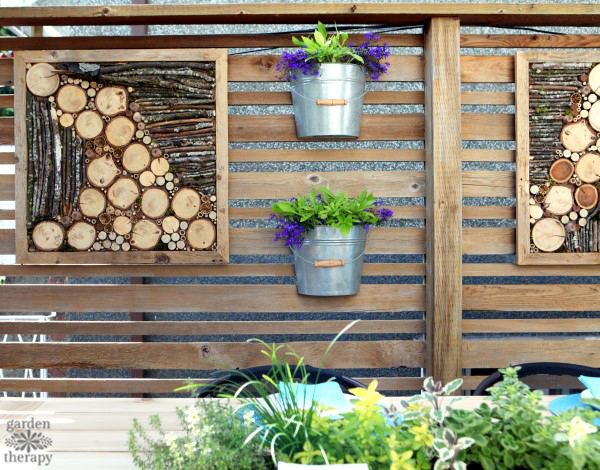
Harvested Vegetables
While just a temporary circle in the garden, how beautiful is a bowl of freshly harvested vegetables? It symbolizes the circle of life. The vegetables and fruits have been grown to feed us. Feeding yourself freshly grown food is also a form of happiness and joy.

Herb Spirals
These are great design ideas for those looking to add circular bed shapes and who may be short on space. An urban gardener’s dream!
Herb spirals are a space-saving structure that has the most delightful winding shape. One side of the spiral will get full sun while the opposite side will be shaded and cool.
The stones absorb and hold heat, which allows climate control and energy harvesting, making it an ideal structure for herbs with different climate needs.
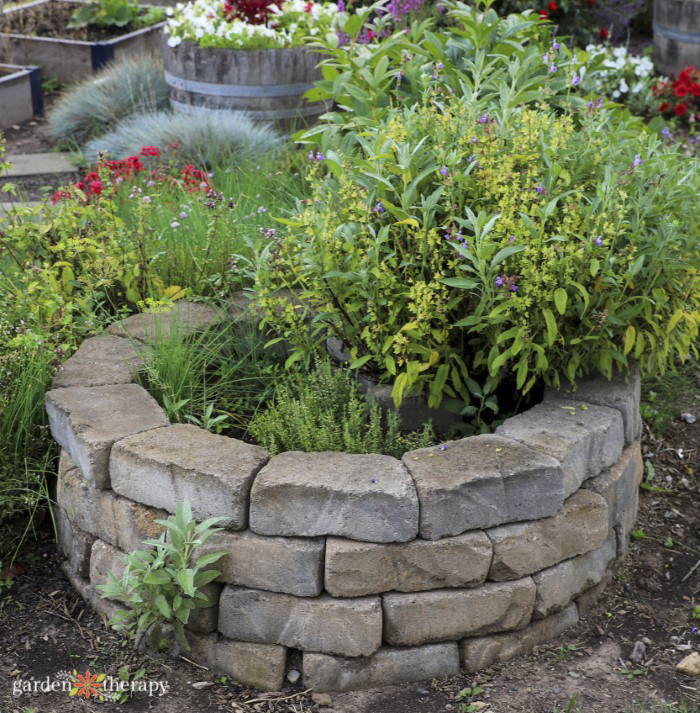
Fruit Trees
When you see a fruit tree full of fruit, don’t you want to pick it and take a big bite? As we know, we gravitate to these circular shapes, and a fruit tree (or bush) laden with fruit is the ultimate temptation. So go ahead and take a bite. Get those nutrients in!
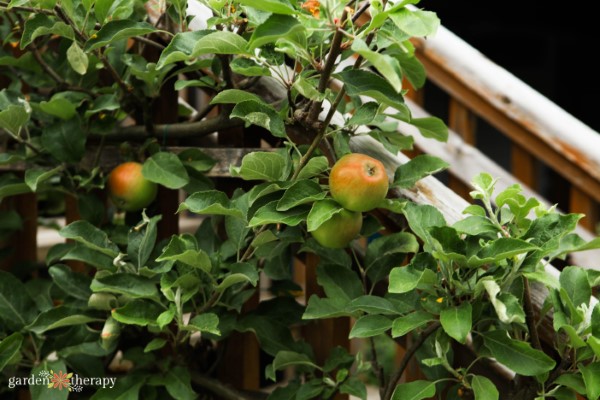
Stepping Stones
I made these hopscotch stepping stones for my kiddo when he was young to put in the play garden. They have a circular shape to encourage play but also implement a game in the garden.
The idea behind my play garden was to create a space that would engage children outside but also be aesthetically pleasing for adults. Mission accomplished.
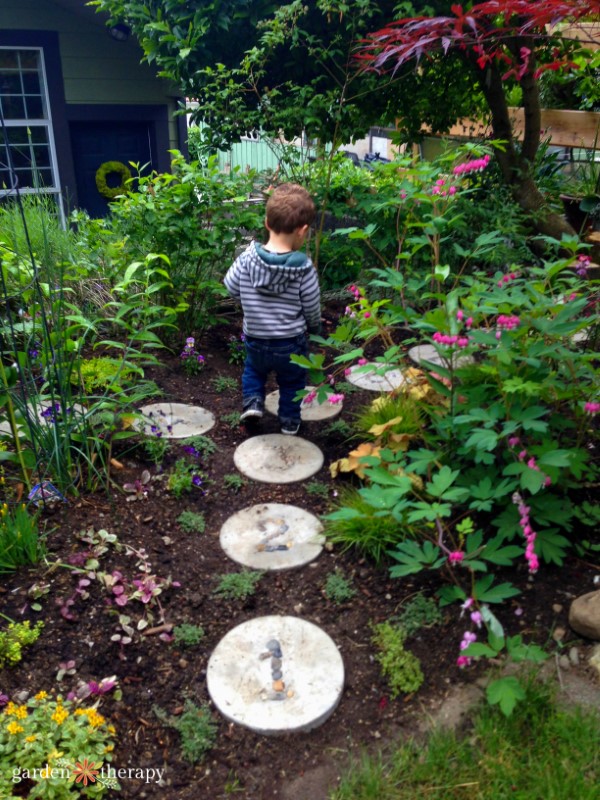
Frequently Asked Questions About Circular Garden Design
The most important step is to ensure you can access all the plants in the garden. Either make sure the circle is small enough to reach the center or use a design like a keyhole garden bed to reach the plants.
Also, consider light and how tall the plants will grow. You never want large and tall plants to overshadow smaller ones in the circle that may need lots of light.
A wooden stake in the center with a string attached can help you make a perfect circle. You can frame your circular garden using paving stones, bricks, wood, or even packed hay.
Circular gardens discourage using rows, instead encouraging you to densely plant to fill a circle. This can then conserve space elsewhere and conserve water, compost, and fertilizer within the circle. It also limits your need to walk far to tend to your plants.
Circles are naturally comforting and safe shapes, drawing people in. They work well to create a sense of calm in gardens, whether they’re used to house vegetables or ornamental plants. Just by adding a circle to your landscape design, you’re bringing a meditative space to your garden.
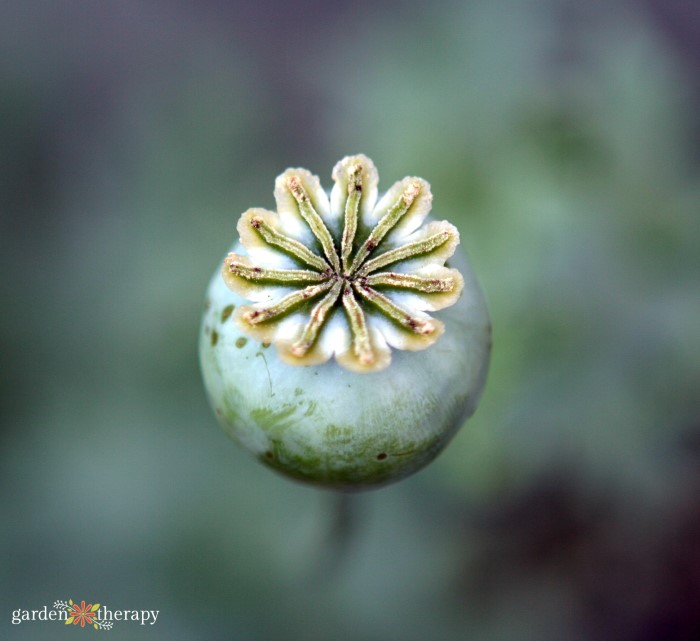
More Gardening Design Tips


